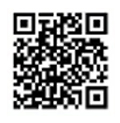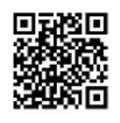目的探讨中医体质调摄在高血压合并高尿酸血症(HUA)患者社区健康管理中的应用效果。方法选取2018年1~2月在本服务站建立健康档案的高血压合并HUA患者280例为研究对象,采用随机数字法分为观察组和对照组,每组140例。对照组患者给予常规管理,观察组患者在对照组管理的基础上给予中医体质调摄干预,两组患者均连续干预18个月。检测比较两组患者干预前后的体质量指数(BMI)、腰围(WC)、收缩压(SBP)、舒张压(DBP)、空腹血糖(FBG)、胆固醇(TC)、三酰甘油(TG)、血尿酸(SUA)、尿素氮(BUN)、血肌酐(Scr)水平以及评价生活质量的SF-36量表评分;比较观察组患者干预前后的中医体质类型变化情况;比较两组患者干预期间的痛风发生情况。结果干预前,两组患者的BMI、WC、SBP、DBP、FBG、TC、TG、SUA、BUN、Scr水平比较差异无统计学意义(P>0.05);干预18个月后,两组患者的BMI、WC、SBP、DBP、FBG、TC、TG、SUA、BUN、Scr水平明显降低,观察组患者的水平显著低于对照组,差异有统计学意义(P<0.05)。干预后观察组偏颇体质患者数量显著减少(P<0.05)。干预前,两组患者的生理功能、生理职能、躯体疼痛、总体健康、情感职能、精神健康、活力、社会功能评分比较差异无统计学意义(P>0.05),干预18个月后,两组患者的SF-36量表的生理功能、生理职能、躯体疼痛、总体健康、情感职能、精神健康、活力、社会功能评分明显升高,观察组患者的评分显著高于对照组(P<0.05)。干预期间,观察组患者的痛风发生率(33.57%)明显低于对照组(47.86%),差异有统计学意义(P<0.05)。结论中医体质调摄可有效改善高血压合并高尿酸血症患者的肥胖状况和血压、血糖、血脂水平和肾功能水平,提高患者生活质量,显著改变患者的中医体质类型,减少痛风的发生。
当前位置:首页 / 中医体质调摄在高血压合并高尿酸血症患者社区健康管理中的应用效果分析▲
论著
|
更新时间:2020-09-03
|
中医体质调摄在高血压合并高尿酸血症患者社区健康管理中的应用效果分析▲
Application effect analysis of Traditional Chinese Medicine physical recuperation in the community health management of patients with hypertension complicated with hyperuricemia
内科 202015卷04期 页码:408-412
作者机构:佛山市顺德区大良社区卫生服务中心古鉴社区卫生服务站,广东省佛山市528300
基金信息:▲基金项目:佛山市卫生和健康局医学科研项目(20180371)
- 中文简介
- 英文简介
- 参考文献
ObjectiveTo explore the application effect of Traditional Chinese Medicine (TCM) physical recuperation in the community health management of patients with hypertension complicated with hyperuricemia (HUA). MethodsA total of 280 hypertension complicated with HUA patients who established health archives at our service station from January to February 2018 were selected as the research objects, and they were divided into observation group and control group by random number method, with 140 cases in each group. Patients in the control group were routinely managed, whereas the observation group received TCM physical recuperation intervention on the basis of the control group. Both groups were intervened continuously for 18 months. The body mass index (BMI), waist circumference (WC), systolic blood pressure (SBP), diastolic blood pressure (DBP), fasting blood glucose (FBG), total cholesterol (TC), triacylglycerol (TG), serum uric acid (SUA), urea nitrogen (BUN), serum creatinine (Scr) levels and the SF-36 scale scores for evaluating the quality of life were tested and compared between the two groups. The changes of TCM constitution classification in the observation group were compared before and after the intervention, and the occurrence of gout was compared between the two groups during the intervention period. ResultThere were no statistically significant differences in the levels of BMI, WC, SBP, DBP, FBG, TC, TG, SUA, BUN, and Scr between the two groups before the intervention (P>0.05). After 18 months of intervention, BMI, WC, SBP, DBP, FBG, TC, TG, SUA, BUN, and Scr levels of the two groups significantly decreased, and the levels mentioned above of patients in the observation group were significantly lower than those in the control group, and the differences were statistically significant (P<0.05). After intervention, the number of patients in the biased constitution significantly reduced in the observation group (P<0.05). Before intervention, there were no statistically significant differences in the scores of physiological function, physiological limitation, physical pain, general health, emotional function, mental health, vitality, and social function between the two groups of patients (P>0.05). After 18 months of intervention, the physiological function, physiological limitation, physical pain, general health, emotional function, mental health, vitality, and social function scores for the SF-36 scale significantly increased in both groups, and the scores mentioned above of the observation group were significantly higher than those of the control group, following statistically significant differences (P<0.05). The incidence of gout in the observation group (33.57%) was significantly lower than that in the control group (47.86%) during the intervention period, and the difference was statistically significant (P<0.05). ConclusionTCM physical recuperation can effectively improve the obesity state, levels of blood pressure, blood glucose, and blood lipid, as well as the renal function of patients with hypertension complicated with HUA, improve the quality of life in patients, prominently change the TCM constitution classification of patients, and thus reduce the occurrence of gout.
-
无




 注册
注册 忘记密码
忘记密码 忘记用户名
忘记用户名 专家账号密码找回
专家账号密码找回 下载
下载 收藏
收藏
